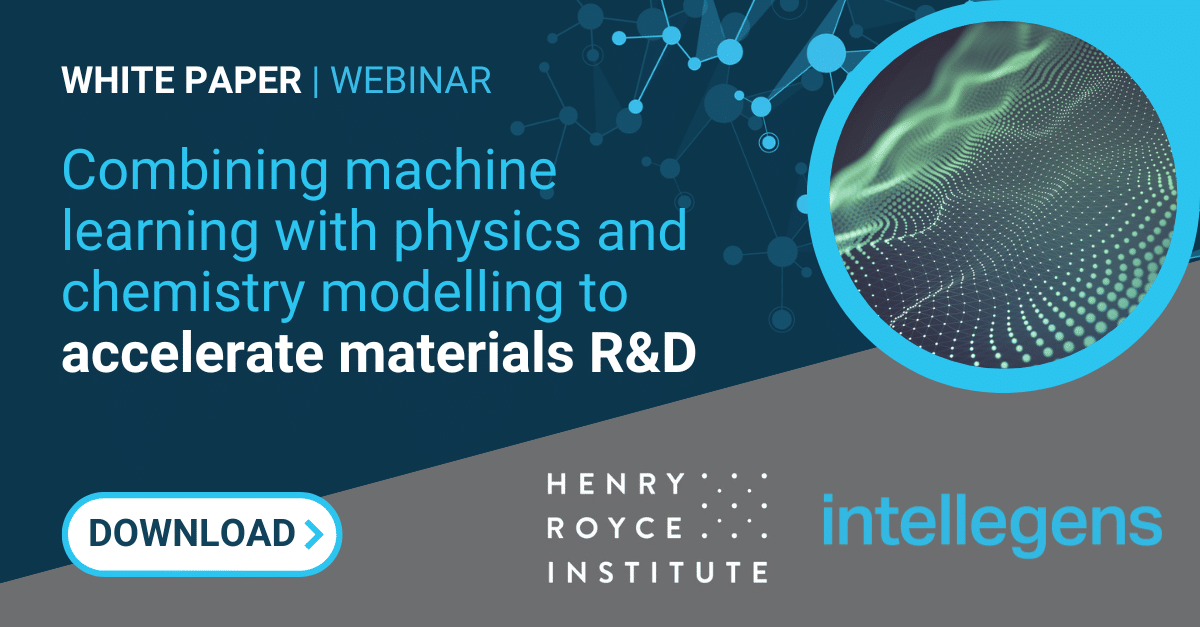Research project with Henry Royce Institute
A new white paper reports results from a project, in collaboration with the Henry Royce Institute, to investigate effective strategies to combine machine learning (ML) with other modelling and simulation methods, accelerating materials R&D
Physics and chemistry simulation and analytical methods are now standard tools in the development of improved materials and formulations and the use of machine learning (ML) is increasing. Both classes of method have advantages and drawbacks. This project explored an integrated approach, aiming for enhanced insights into materials R&D problems. It focused on case studies in alloys and surfactants.
Project description
The project was part of Royce’s Materials Challenge Accelerator Programme, supporting their Materials 4.0 Roadmap.
We developed a framework that allows ML methods to be combined with physics and chemistry models, and proved the effectiveness of such integration with two case studies. One used the pycalphad open source version of CALPHAD thermodynamic method. The other used molecular descriptors calculated from SMILES strings with the Amsterdam Modelling Suite quantum chemistry method from SCM. These modelling approaches enabled ‘feature engineering’ for the ML methods, delivering improvements for measures of model quality when compared to models trained on the original datasets, reflecting the ability to make more accurate predictions. The new descriptors were shown to be important for achieving specific model targets as well as aiding in data visualisation via dimensionality reduction. The developed solution is easily extendable and flexible, and allows the integration of new scientific methods beyond the scope of the project.
Future work will focus on further collaboration with partners to improve model performance to help achieve the desired Materials 4.0 roadmap set by the Henry Royce Institute.
This work was presented in a joint webinar with Royce in July 2023 – view recording here.
